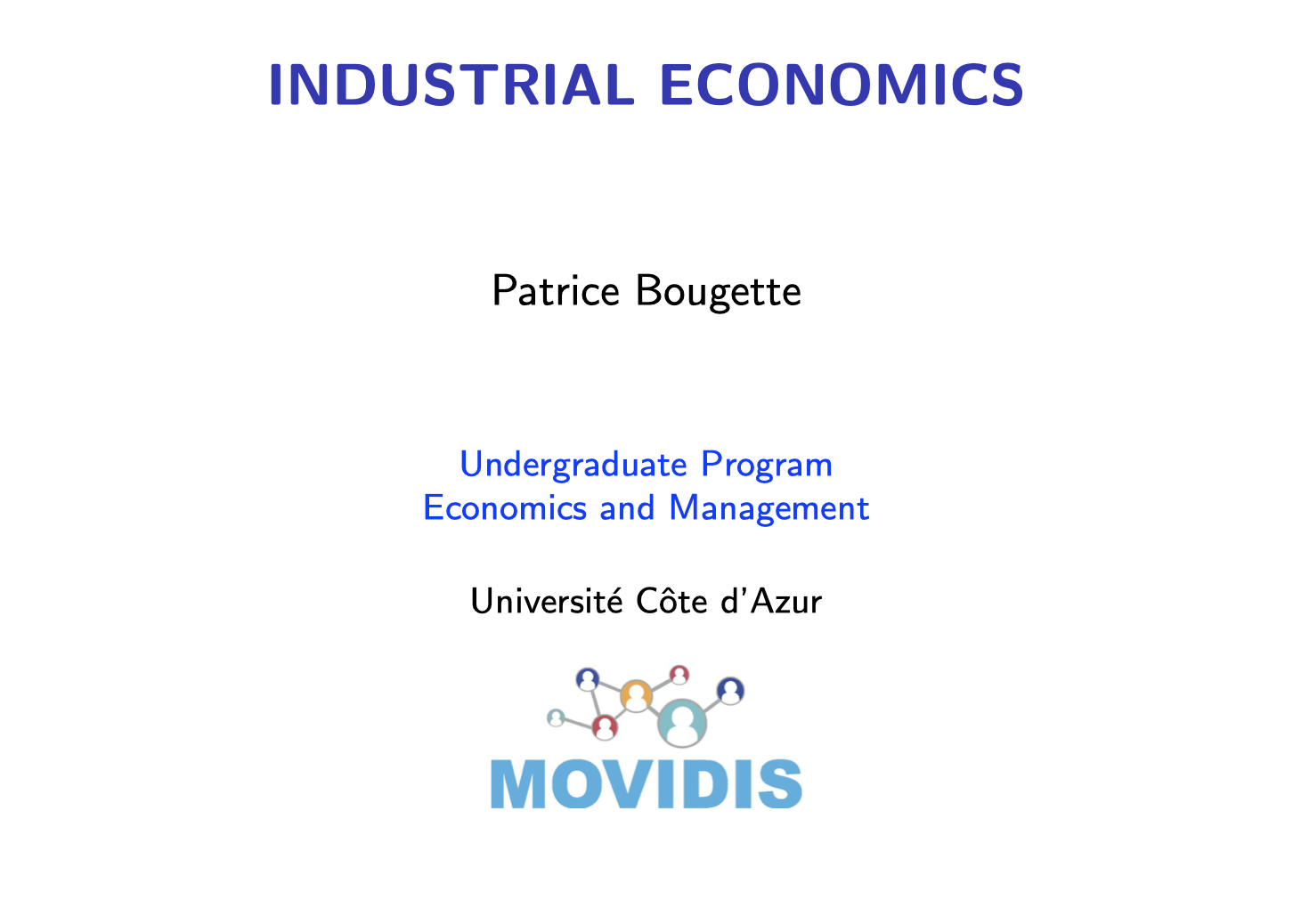-
Introduction
1. What is industrial economics?
2. What is the purpose of industrial economics?
3. The history of industrial economics
3.1 The Harvard School
3.2 The Chicago School
3.3 The Post-Chicago School
4. Market definition and performance
4.1 How to define markets?
4.2 How to measure market power?
ECUE Industrial Economics S5
ECUE's code : ILEMIE5
PRESENTATION

This Industrial Economics course is a continuation of the Microeconomics 1, 2 and 3 courses of the undergraduate program in economics and management. The objective is to introduce firm strategy in oligopolistic environments. We first detail the importance of the delimitation of relevant markets in competitive analysis. We then introduce the product differentiation strategy (e.g., Hotelling model). The next step is to include some elements of competitive dynamics. We provide two ways to do this: i) adding several decision steps (e.g. choice of firms’ location, choice of product quality); ii) free entry of firms into the market.
Course's manager(s)
Patrice BougetteDistant
- 20h of lectures
PREREQUISITES
-
Basics of microeconomics (market equilibrium, perfect competition)
-
Mathematics course, optimization under constraints
OBJECTIVES
- differentiate the positive approach from the normative approach of the economist
- know the evolution of the discipline and the usefulness of using elements of game theory
- know the different approaches and the usefulness of delimiting the relevant markets
- not relying solely on market share to assess the degree of competition in a market
- calculate the equilibrium characteristics of an oligopolistic environment
- Recognize and apply different product differentiation strategies
- identify and choose the appropriate type of competition in a market
- integrate a dynamic approach in the modeling of an oligopoly
- applying the theory of contestable markets to competitive analysis
CONTENT
-
Introduction

-
Chapter 1. Static imperfect competition

-
Chapter 1. Static imperfect competition
1. Quantity competition with n firms
1.1 Model assumptions
1.2 Model equilibrium
1.3 The oligopoly's pricing formula
1.4 The model in practice
2. Price competition with differentiated products
2.1 Representative consumer models
2.2 Unit demand models
2.2.1 The Hotelling Line (1929)
2.2.2 The Salop's Circle Model (1979)
3. Price competition vs. quantity competition
3.1 Direct comparison with a unified model
3.2 Strategic substitutes vs. strategic complements
3.3 How to choose in a given market
-
-
Chapter 2. Dynamic aspects of imperfect competition

-
Chapter 2. Dynamic aspects of imperfect competition
1. Sequential choices
1.1 Leader and follower
1.2 Location choice
1.3 Quality choice (model of vertical product differentiation)
1.4 The Kreps and Scheinkman’s model (1983)
1.5 The concept of commitment (Th. Schelling)
2. Free entry models
2.1 The Cournot model with free entry
2.2 The Salop model with free entry
2.3 Natural oligopolies
2.4 Monopolistic competition (Chamberlin, 1933)
2.5 The theory of contestable markets (Baumol, Panzar, and Willig, 1982)
-






